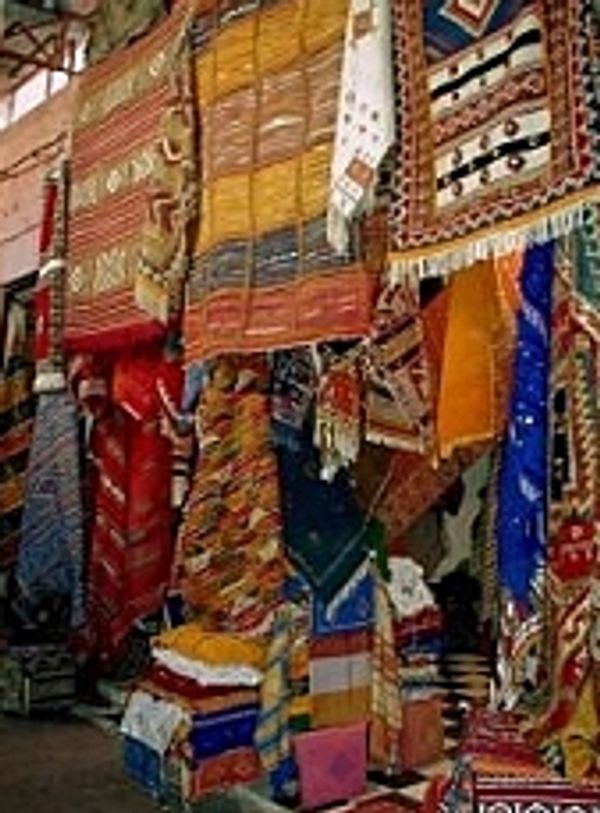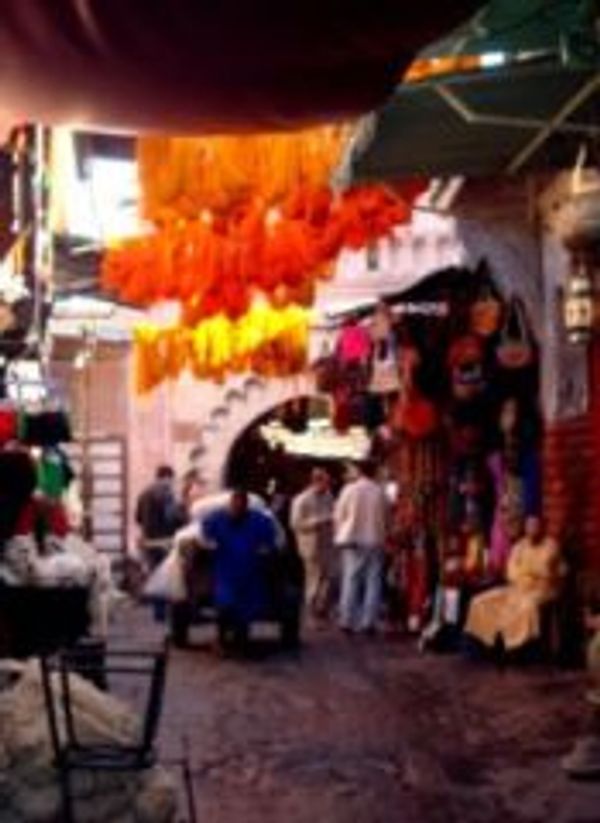Moroccan Tribal Rug And Kilim Art

Moroccan Rug Shop

Drying Dyed Wool

Moroccan Tribal Rugs

Dyed Wool

Moroccan Tribal Rugs
Introduction to Moroccan Rugs
Story of the Moroccan Rug
When the Berbers came to North Africa around 1500 B.C. they brought with them primitive weaving techniques which developed over the millennia into the complex techniques required for their prestigious traditional textiles well known today. The loom is still an important possession in traditional Moroccan homes today.
In recent years Moroccan flat weave kilim and pile rugs became recognized by scholars and collectors for the complexity and skill of their weaving. Unlike rugs from Central Asia and the Middle East, Moroccan rugs, uniquely free from Anatolian influence, are prized for their individuality. Each rug is a unique work of art and the expression of the individual weaver's creativity, repetition in design thus reduces its value.

Buying rugs and kilim at Rug Auction in Marrakesh Souk
Rural Tribal Rugs
Uniqueness; Both Antique and Contemporary
We concentrate on the Rural rugs and kilim from the Berber Tribes of the Atlas Mountains and the Berber-Arab Tribes of the plains of Marrakesh. Although each rug is a unique work of art, Moroccan Rural rugs are distinctive in their color, design and weave. They are identified by region and tribe (of which there are over 600) although more recent intermarriage between tribes results in blurring of the boundaries.
Traditionally, rural rugs/kilim are woven from hand spun fleece or of goat or camel hair, hand dyed from natural vegetable and mineral resources available locally. The strong tradition of family weaving still thrives today; skilled weavers being highly respected within the community and for many rural peoples they provide the single luxury items in the home.
Modern rugs are still made using traditional techniques on fixed-heddle looms although the majority incorporate some commercially produced synthetic dyes and may have a cotton foundation (warp and weft threads) which generally produces a straighter rug. The most prized rugs, regardless, are with the exception of a handful of rare worm silk rugs and the incredibly fine complex flatweave of a very few tribes, 100% wool, goat or camel hair.
Exotic Craftsmanship
The materials Berber rugs are made from, together with the freedom of design, result in products of unparalleled richness and beauty which cannot fail to enhance any home. Moroccan rugs and kilims make both unique practical floor coverings and spectacular wall hangings.
Our Tribal Rug Designs









Copyright © 2020 Onlyfrica - All Rights Reserved.
Cookie Policy
This website uses cookies. By continuing to use this site, you accept our use of cookies.